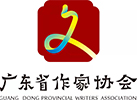
标题

标题
内容
首页 > 自定义类别 > 海上丝绸之路文学发展论坛 > 发言
文学和翻译:一个促进理解的机会
更新时间:2018-11-11 作者:马兰·V. ·纳拉亚南(印度)来源:广东作家网
我来自一个有着24种语言、几百种方言的国家。在这24种语言中,5种是古典语,意味着这些语言已经有超过2000年的历史。它们的书写和发音都不一样。文学是人们进行文化交流的工具。人们通过翻译理解各自的情感、尊重各自的价值观、交流各自的想法。
通往印度的丝绸之路的历史和我的语言泰米尔语一样古老。根据中国宋朝文献记载,1077年,朱罗国王库罗通伽的大使及其随员抵达宋朝朝廷。这是一次贸易之旅。该大使及其随员给宋朝带来了香料,并用香料交换了81,800串铜钱吊子返回朱罗。
然而丝绸之路对世界历史的贡献绝不仅仅止于一些商品的贸易,它更促进了亚洲、欧洲和非洲之间思想、艺术和科学的交流。它是世界上第一条信息高速公路。
文学是生活的韵律,是文化的载体。海上丝绸之路为我们提供了机会,重温、复兴文学这一文化沟通方式。培育文学就是培育文化。持久不绝的文化,保证了人类的积极发展。
海上丝绸之路沿线国家间文学的多边交流,不仅促进了国家间的相互理解,还将不断激励该地区人民。在此,我想讲述中国浙江革命志士、女性诗人秋瑾的言词和生活如何影响了生活在3,000多英里外的印度南部旁迪切里的女性的故事。
伟大的印度民族诗人萨布拉马尼亚·巴拉蒂翻译了秋瑾的小传,该翻译于1918年5月以泰米尔语发表于期刊《亚细亚评论》上。他描述了秋瑾出生于福建厦门、她的不快乐的婚姻、她在日本留学、她与孙中山的关系、她与推翻清王朝的革命组织的联系、她的日记、她的口才、最后于31岁牺牲。他甚至还翻译了她的一篇演讲和一首诗文。
秋瑾的故事被用来教育印度女性了解自己的权利,鼓励印度女性追求自己的权利。印度当时还处于英国统治的殖民地时代。需要指出的是,这些翻译完成于1918年,100年前,在那个年代,沟通还是一件非常有挑战性的任务!
但是,对于那些熟悉巴拉蒂的人们来说,他选择秋瑾的诗文一点也不意外,因为他本身就是倡导女性权利的改革家。但对于我们来说,一位台湾诗人将巴拉蒂的诗选翻译成普通话,确实是一个令人意外的惊喜。
这位台湾诗人还翻译了《蒂鲁古拉尔》,这是一部经典的泰米尔语作品,有1,330首对句,强调普世的兄弟情谊、真理和其它道德价值观。《蒂鲁古拉尔》是泰米尔语最重要的作品之一,其作者是著名诗人圣·提鲁瓦鲁瓦(Thiruvalluvar)。
《诗经》是中国最早的一部诗歌总集,印度前驻华外交官曾将《诗经》的节选部分翻译成泰米尔文在印度出版。译者说:“古老的汉语言文学与古老的泰米尔桑格姆文学之间有惊人的相似之处。”
印地语是印度广泛使用的语言,特别在印度北部地区。一些印地语经典作品已被翻译成中文。2016年1月,15世纪盲人诗人苏尔达斯的宗教诗歌选集《苏尔诗海》的中文版本在德里发行。中文译者是杰出的中国学者姜景奎教授。姜景奎教授是北京大学外国语学院印地语系系主任、南亚研究中心院长。
他的译作标志着对汉语和印地语经典以及当代作品进行有计划的系列翻译项目的开始,而2013年5月中国总理李克强和时任印度首相曼莫汉·辛格发表的联合声明中就提到了该项目。
两国领导人的相继拜访加强了文化项目的进展。被选中翻译成印地语的中国文学作品有:孔子和儒家经典、玄奘和《西游记》、巴金和其代表作品《家》、老舍和《骆驼祥子》、茅盾和其作品《子夜》、郭沫若选集、冰心和其代表作品、徐志摩和其选集、王蒙和《青春万岁》、阿来和《尘埃落定》、季羡林和《中印文化交流》以及陈忠实和《白鹿原》。
所有例子说明了两个事实:
1. 印度文学和中国文学经历了有共同点的古代文化,本身也发展出了许多共同之处。因此翻译此类文学作品并非不可能。只需要两国作家之间发挥主动性、加强合作。
2. 海上丝绸之路倡议的成功之处在于消除国家间及其人民之间的不信任,这一点可以通过翻译从而加强国家间的文学多边交流实现。
我希望广东省作家协会能够制定一份计划促进海上丝绸之路沿线国家之间的翻译项目的开展。可以设立委员会,每个国家派代表共同参与这个项目。我很乐意为该项目提供个人最大的支持。
感谢广东省作家协会和广州市人民政府新闻办提供了这个机会,使我能够分享我的观点。
Literature And Translation:
An Opportunity To Enhance Understanding
Maalan V. Narayanan (India)
I come from a country that writes in 24 languages and speaks hundreds of dialects. Among these 24 languages, five are classical languages, which means that they are in existence for over 2000 years. They are diverse in their scripts and accents. Literature is the cultural communication between us. We understand each other's emotions, respect values and exchange ideas through translations.
Silk Road to India is as ancient as my language Tamil. Chinese Song Dynasty reports record that an embassy from Chola king Kulothunga reached the Chinese court in the year 1077 CE. This embassy was a trading venture and they returned with 81,800 strings of copper coins in return of spices.
But Silk Route's greatest contribution to world history was not mere trading of few commodities but the exchange of ideas, art and science between Asia, Europe and Africa. It was the world's first information superhighway.
Literature is the rhythm of the livelihood and the repository of the culture. Maritime Silk Route offers us an opportunity to revive and revitalize our cultural communication that is literature. Nurturing literature is nurturing culture. When cultures are sustained it ensures the positive growth of humankind.
Multilateral exchange of literature between the countries in the Maritime Silk route will not only pave a way to better understanding of these countries but will also inspire the people in the region. I would like to recall here how the lines and life of a female revolutionary Chinese poet Qiu Jin of Zhejiang, inspired the women living 3000 miles away at Puducherry in Southern India.
The great National Poet of India, Subramania Bharathi, translated the biographical sketch of Qiu Jin appeared in the journal, Asiatic Review, in Tamil in May 1918. He describes her life right from her birth at Xiamen, Fujian, her unhappy marriage, her journey to Japan, her association with Sun Yat Sen, her associations with revolutionary societies to overthrow Qing dynasty, her journals, her eloquence, and finally her execution at the age of 31. He has even translated one of her speech and a poem.
All these were used to educate women in India on their rights and to motivate them to seek their rights. India was in colonial rule then, under British. And it may be remembered that this translation was done 100 years ago, in 1918, when the communication was a challenging task!
But to those who know Bharathi, it wouldn't be a surprise that he choose Qui Jin's poems as he himself was a crusader of women's rights. But it was indeed a pleasant surprise for us when a Taiwan poet came forwarded to translate selected poems of Bharathi into Mandarin.
The Taiwan poet has also translated Thirukural which is a classic Tamil text consisting of 1330 couplets that emphasise universal brotherhood, truth and other moral values. It is one of the most important works of Tamil language by a saint-poet Thiruvalluvar.
Shi Jing, which is the earliest extant book available in Chinese literary history is translated into Tamil by an Indian diplomat Sridharan Madhusudhanan. Sridharan says, " There are surprising similarities between the ancient Chinese literature and the Sangam literature of ancient Tamil”
Hindi is a widely spoken language in India, particularly Northern India. A few classical works of Hindi are translated into Chinese. In January 2016, a Chinese translation of Sursagar, a collection of devotional poems by a 15th-century blind poet Surdas was released at Delhi. The translation was done by an eminent Chinese scholar Prof. Jiang Jingkui. Professor Jiang Jingkui is the Head of the department of Hindi and Director of South Asian Studies at Peking University.
His work marks the beginning of a planned series of translations of both the Chinese and the Indian classics and contemporary works on a reciprocal basis, an initiative that finds its mention in the joint communiqué agreed between China's Premier Mr Le Keqiang and then Indian Prime Minister Dr Manmohan Singh in New Delhi in May 2013
Subsequent visits by the leaders of both the countries the cultural initiatives have enhanced. Some of the Chinese literature that are chosen for translation into Hindi are : Confucius and Confucian Classics; Xuan Zhang and Journey to the West during Great Tang; Ba Jin and his representative work The Family; Lao She and The Camel Boy; Mao Dun and his Midnight; Selected Works of Guo Moruo; Bing Xin and her representative works; Xu Zhimo and his selected works; Wang Meng and Long Live the Youth; Wang meng and Forever Young; A Lai and Red Poppies; Ji Xianlin and Sino-Indian Cultural Interaction; and Chen Zhongshi and The White Deer Plain
All these examples indicate two facts:
1. There are many similarities between Indian literature and Chinese literature as they evolve from two ancient cultures which have similarities among them. Hence translation of these kinds of literature is not impossible. All that is needed is initiative and cooperation between the writers of the two countries
2. The success of the Maritime Silk Road initiative depends on dispelling the mistrust between the countries and its people. This can best be achieved by the multilateral exchange of literature between the countries through translations.
I request Guangdong Provincial Writers Association to chalk out a plan to carry forward the translation project between the countries in the Maritime Silk Road. It may be useful to set up a committee with representation from every country to work on the project. I am willing to extend my best support for such an initiative.
I thank the Guangdong Provincial Writers Association and the Information office of Guangzhou Municipal People's Government for giving me this opportunity to share my views.